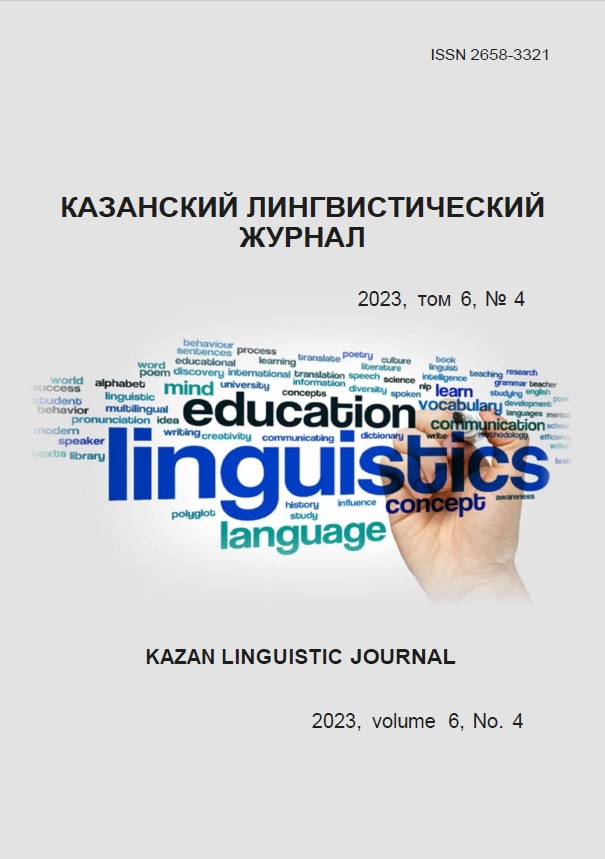A Headline as a Strong Position of a Publicistic Text
https://doi.org/10.26907/2658-3321.2023.6.4.533-544
Keywords:
headline, strong position, publicistic text, stylistic devicesAbstract
The article deals with the analysis of stylistic devices which are used in the headlines of publicistic texts to express the author’s idea in a brighter way and to direct readers’ attention. The actuality is explained by the fact that the researchers are interested in the peculiarities of the construction of headlines which being a strong position in the text make the first impression and excite curiosity.
The research goal is to study linguistic expressive means which are used in headlines as strong positions of publicistic texts. The notion “headline” and its peculiarities in a publicistic text were investigated to achieve the goal. English-speaking newspaper articles were analyzed to discover the stylistic devices which are employed in the headlines as strong positions of publicistic texts. It was determined that newspaper authors use various stylistic devices to make the headline more vivid and magnetic. The following methods were applied in the article: continuous sampling method, stylistic analysis of linguistic units, contextual analysis. British and American newspapers The Times, The Guardian, The Financial Times, FT Weekend, Washington Post, The Daily Telegraph, New York Post, Fox News, Daily Mail, US Today served as research material.
References
References
Galperin I.R. Text as an Object of Linguistic Research. M.: KomKniga; 2007. 144 p.
Arnold I.V. Stylistics. Modern English Language. 14-th ed. M.: Flinta: Nauka; 2021. 384 p.
ABBYY Lingvo 10. English-Russian, Russian-English Electronic Dictionary. [Elec-tronic resource]. Elektron. tekstovyje., zv. dan. i prikladnaja progr. [40-300 MB]. M.: Slovar obshhej leksiki [I dr.]; 2004. 1 elektron. opt. disk (CD-ROM): zv., czv. Sist.trebovanija: PK 200 MGcz i vyshe; 8 MB OZU.






